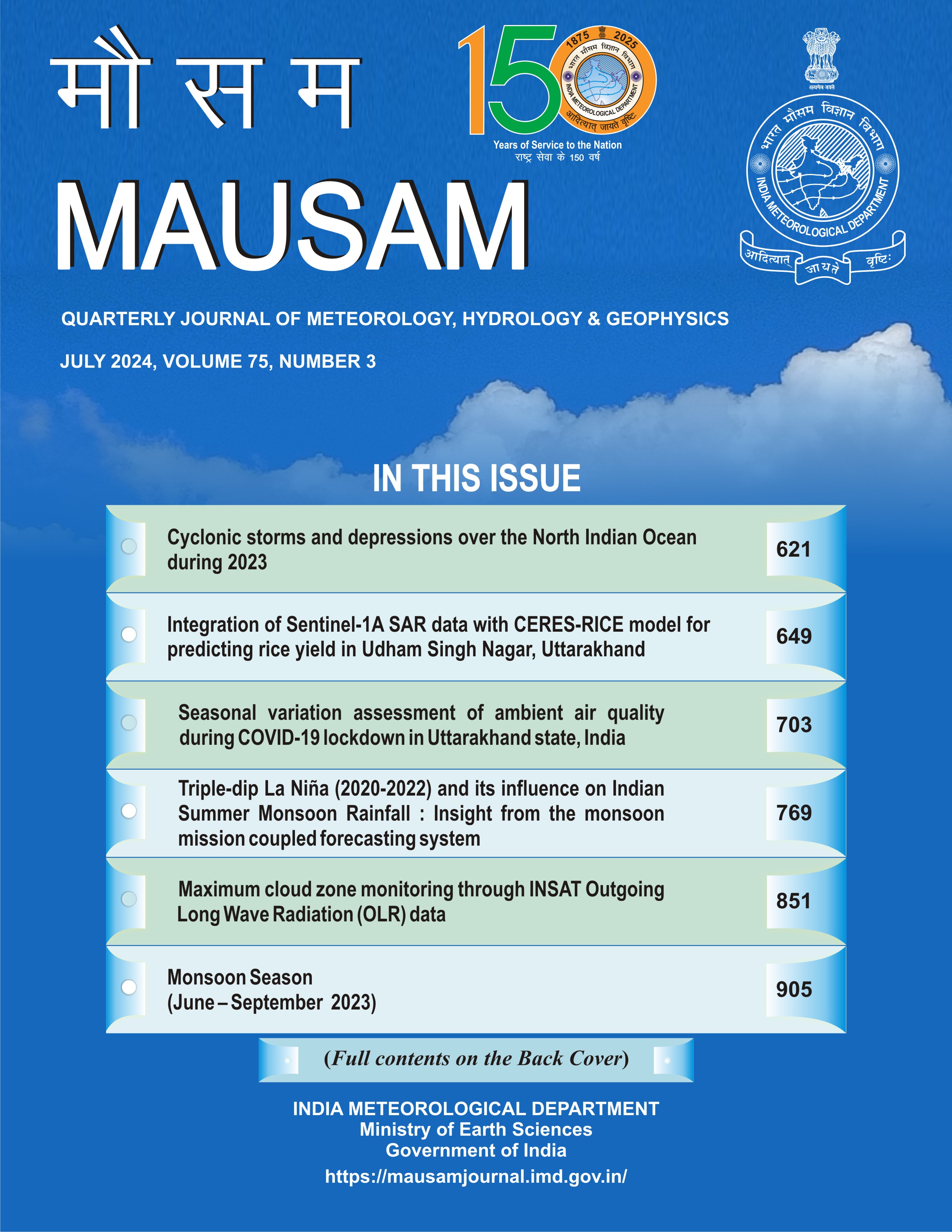Assessment of Uncertainty in Estimation of Rainfall using EV1 Distribution with Reference to Data Length
DOI:
https://doi.org/10.54302/mausam.v75i3.6236Keywords:
Anderson-Darling, Extreme Value Type-1, Kolmogorov-Smirnov, Method of Moments,, Maximum Likelihood Method, L-Moments, Method of Least Squares, RainfallAbstract
Estimation of rainfall for a given return period is considered as an essential input to a hydrologic model that is used to estimate design discharge, which is needed for the planning and design of civil engineering infrastructure projects viz., roads, bridges, green highways, etc. This can be estimated by using recorded rainfall data over many stations in a given region. Uncertainties in design rainfall estimates arise from various sources such as data error, sampling error, regionalization error, model error, etc. Further, in model error, the data length is having direct impact in assessing the uncertainty of error in estimation of rainfall. This paper aims to assess the uncertainty in rainfall estimates of Pune and Vadgaon Maval, which can be carried out through extreme value analysis (EVA) by fitting Method of Moments (MoM), Maximum Likelihood Method (MLM), Method of Least Squares (MLS), Probability Weighted Moments (PWM) and Method of L-Moments (LMO) of Extreme Value Type-1 (EV1) distribution to the annual 1-day maximum series of rainfall. The characteristics of data series with different data length used in EVA of rainfall is examined through statistical tests viz., Wald-Wolfowitz runs test for randomness, Mann-Whitney U-test for homogeneity and Grubbs' test for identifying the outliers in data series. The adequacy of EV1 distribution in rainfall estimation is evaluated by Goodness-of-Fit (viz., Anderson-Darling and Kolmogorov-Smirnov) tests. The EVA results of Pune and Vadgaon Maval presents that (i) the estimated rainfall increases when data length increases; (ii) the standard error in the estimated rainfall decreases when the data length increases; and (iii) the standard error in rainfall estimates given by MLM is less than those values of MoM, MLS, PWM and LMO
Downloads
Published
How to Cite
Issue
Section
License
Copyright (c) 2024 MAUSAM

This work is licensed under a Creative Commons Attribution-NonCommercial 4.0 International License.
All articles published by MAUSAM are licensed under the Creative Commons Attribution 4.0 International License. This permits anyone.
Anyone is free:
- To Share - to copy, distribute and transmit the work
- To Remix - to adapt the work.
Under the following conditions:
- Share - copy and redistribute the material in any medium or format
- Adapt - remix, transform, and build upon the material for any purpose, even
commercially.



